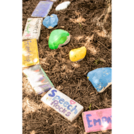
Students will determine a rule for classifying outdoor objects based on physical properties of matter.
- Subject:
- Physical Science
- Material Type:
- Lesson Plan
- Author:
- rgothaii@rgdeuceenterprises.com
- Date Added:
- 07/22/2021

Students will determine a rule for classifying outdoor objects based on physical properties of matter.
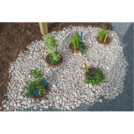
Students will determine a rule for classifying outdoor objects based on physicalproperties of matter.

Students are introduced to the physical concept of the colors of rainbows as light energy in the form of waves with distinct wavelengths, but in a different manner than traditional kaleidoscopes. Looking at different quantum dot solutions, they make observations and measurements, and graph their data. They come to understand how nanoparticles interact with absorbing photons to produce colors. They learn the dependence of particle size and color wavelength and learn about real-world applications for using these colorful liquids.

In this hands-on activity rolling a ball down an incline and having it collide into a cup the concepts of mechanical energy, work and power, momentum, and friction are all demonstrated. During the activity, students take measurements and use equations that describe these energy of motion concepts to calculate unknown variables, and review the relationships between these concepts.
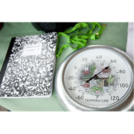
Students will make it a regular practice to record weather data using thermometers, wind vanes and rain gauges.

Building upon their understanding of forces and Newton's laws of motion, students learn about the force of friction, specifically with respect to cars. They explore the friction between tires and the road to learn how it affects the movement of cars while driving. In an associated literacy activity, students explore the theme of conflict in literature, and the difference between internal and external conflict, and various types of conflicts. Stories are used to discuss methods of managing and resolving conflict and interpersonal friction.

Relativity Lite is designed for the General Astronomy sequence (PH 361-2U, SCI 315-6U) whose primary book glosses over Special Relativity and General Relativity while trying to explain the Cosmology that is based on those subjects. Relativity Lite translates the mathematical equations conventional relativity texts rely upon into pictures that are readily understood and contain within them the mathematical essentials. This book provides the comprehensive coverage needed to understand, in sufficient depth, these three linked areas of our reality.
Readers seeking this knowledge on their own, and those in other courses for nonscientists, may also find it helpful.
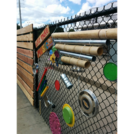
Students will use their knowledge of earth's natural resources to identify resources in the outdoor classroom and classify these resources as either renewable or non-renewable.

In this lesson, students learn about major landforms (e.g., mountains, rivers, plains, valleys, canyons and plateaus) and how they occur on the Earth's surface. They learn about the civil and geotechnical engineering applications of geology and landforms, including the design of transportation systems, mining, mapping and measuring natural hazards.
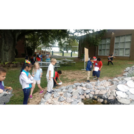
Students will explore the components of soil and make a model of sedimentary rock layers and fossil fuels.
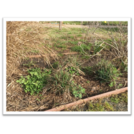
Students will prepare the vegetable beds for planting exploring how simple and compound machines work.

Students research simple machines and other mechanisms as they learn about and make Rube Goldberg machines. Working in teams, students design and build their own Rube Goldberg devices with 10 separate steps, including at least six simple machines. In addition to the use of readily available classroom craft supplies, 3D printers may be used (if available) to design and print one or more device mechanisms. Students love this open-ended, team-building project with great potential for creativity and humor.

In this activity, students are challenged to design a contraption using simple machines to move a circus elephant into a rail car. After students consider their audience and constraints, they work in groups to brainstorm ideas and select one concept to communicate to the class.

Students examine collisions between two skateboards with different masses to learn about conservation of momentum in collisions.
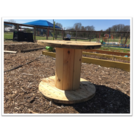
Students will arrange themselves in planetary order and determine the distance from the sun.
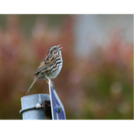
Students will listen for sounds in the garden paying careful attention to volume (how loud or soft a sound), pitch (how high or low) , or if it is a natural or man- made sound.
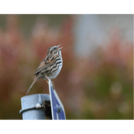
Students will listen for sounds in the garden paying careful attention to volume (how loud or soft a sound), pitch (how high or low) , or if it is a natural or man- made sound.
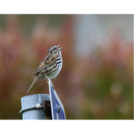
Students will listen for sounds in the garden paying careful attention to volume (how loud or soft a sound), pitch (how high or low) , or if it is a natural or man- made sound.

To understand the challenges of satellite construction, student teams design and create model spacecraft to protect vital components from the harsh conditions found on Mercury and Venus. They use slices of butter in plastic eggs to represent the internal data collection components of the spacecraft. To discover the strengths and weaknesses of their designs, they test their unique thermal protection systems in a planet simulation test box that provides higher temperature and pressure conditions.

The goals of this textbook are to help students acquire the technical skills of using software and managing a database, and develop research skills of collecting data, analyzing information and presenting results. We emphasize that the need to investigate the potential and practicality of GIS technologies in a typical planning setting and evaluate its possible applications. GIS may not be necessary (or useful) for every planning application, and we anticipate these readings to provide the necessary foundation for discerning its appropriate use. Therefore, this textbook attempts to facilitate spatial thinking focusing more on open-ended planning questions, which require judgment and exploration, while developing the analytical capacity for understanding a variety of local and regional planning challenges.
While this textbook provides the background for understanding the concepts in GIS as applicable to urban and regional planning, it is best when accompanied by a hands-on tutorial, which will enable readers to develop an in-depth understanding of the specific planning applications of GIS. Chapters in this text book are either composed by the editors using Creative Common materials, or linked to a book chapter scanned copy in the library reserve. In the end of each chapter, we also provided several discussion questions, together with contextual applications through some web links.